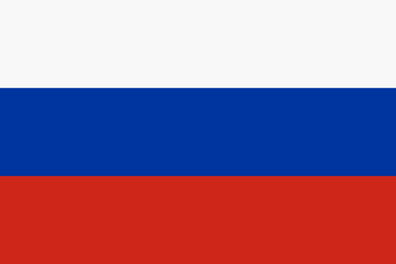Donate to Support Supercluster
Your support makes the Astronaut Database and Launch Tracker possible, and keeps all Supercluster content free.
SUPPORTSupercluster on Patreon
Your support makes the Astronaut Database and Launch Tracker possible, and keeps all Supercluster content free.
SUPPORT






















This goes
to space
Soyuz (spacecraft)
The Soyuz spacecraft is a crew capsule launched on the Russian-built Soyuz rocket. It is one of the most reliable human spacecraft in the world and has a longer service record than any other human space system.
Constructed by the Soviet Union for their lunar program, the Soyuz capsule flew an uncrewed test flight in November 1966 and carried people for the first time on April 23rd, 1967.
While the Russians never made it to the Moon, the Soyuz spacecraft became a workhorse for human low Earth orbit exploration on the Salyut and Mir space stations and now on the International Space Station.
With the retirement of the Space Shuttles in July 2011, the Soyuz spacecraft became the only ship capable of ferrying astronauts to and from the ISS - a distinction it held for nine years until SpaceX launched the crewed Demo-2 mission of Dragon to the Station in May 2020.
The Soyuz capsule can carry up to three people and consists of three main components:
- The Orbital Module: containing experiments, cameras, crew supplies, and all of the docking equipment.
- The Descent Module: containing the crew during launch and landing.
- The Service Module: containing solar panels, power, long-range radio, telemetry, and an engine for orbital maneuvering and deorbit at the end of the flight.
The Descent Module is the only part of the spacecraft that lands back on Earth.
Image: NASA

On this
rocket
Soyuz 2.1a (Crew)
The Soyuz 2.1a is a multi-use rocket, capable of launching civilian and military satellites to orbit as well as cargo (Progress) and crew (Soyuz MS spacecraft) vehicles to the International Space Station.
The rocket itself can launch from all three Roscosmos launch sites: the Baikonur Cosmodrome in Kazakhstan, the Plesetsk Cosmodrome in western Russia, and the Vostochny Cosmodrome in eastern Russia.
For crew and cargo launches to the Station, it can only launch from Site No. 31/6 at the Baikonur Cosmodrome.
A variant of the rocket, Soyuz ST-A, sporting European upgrades, flies commercial satellite and military missions from Arianespace's South American launch site near Kourou, French Guiana.
The Soyuz 2.1a rocket's first crewed launch happened on April 7th, 2020 when it took two Russian cosmonauts and one American astronaut to the Station.
Image: CPC / Roscosmos

From this
launch site
Site No. 31/6 - Baikonur Cosmodrome, Kazakhstan
Site 31/6 – Baikonur Cosmodrome
Site 31/6 has been an active launch pad at Baikonur Cosmodrome since January 14, 1961. Over its long history, it has supported launches of numerous Soviet and Russian rockets, including the R-7A, Vostok, Voskhod, Polyot, Molniya, and earlier versions of the Soyuz family. Originally constructed as a backup to Site 1/5 (Gagarin's Start), it has become a crucial launch facility, especially for uncrewed satellite and robotic missions.
Currently, Site 31/6 is used exclusively for launching the Soyuz-2 rocket family, including Soyuz-2.1a, Soyuz-2.1b, and Soyuz-2.1v. As Russia transitioned from the Soyuz-FG rocket to the digital flight-controlled Soyuz-2.1a, the pad began supporting crewed Soyuz MS missions to the International Space Station (ISS) in April 2020, ensuring continued access to orbit for Russian and international astronauts.
Baikonur Cosmodrome
Located in southern Kazakhstan, Baikonur Cosmodrome is the world’s first and largest operational spaceport. It is historically significant as the launch site of Sputnik 1, the world’s first artificial satellite, in 1957, and Yuri Gagarin’s pioneering human spaceflight on April 12, 1961.
Initially constructed as the primary launch base of the Soviet Union, Baikonur remained a key spaceflight center after the USSR’s dissolution. In 1994, the newly independent Kazakhstan leased Baikonur to Russia under a long-term agreement, currently extended until 2050. The site continues to host a wide range of missions, from crewed spaceflights to interplanetary probes.
Baikonur is jointly operated by Roscosmos, the Russian federal space agency, and the Russian Aerospace Forces, the military branch responsible for space operations. While Russia is shifting some launches to its newer Vostochny Cosmodrome, Baikonur remains the primary launch site for Soyuz human spaceflight missions and numerous commercial and government payloads.
Image courtesy of GK Launch Services / Roscosmos

Soyuz
docks here
ISS - Poisk Module
Poisk
Meet the Mini-Research Module 2: Poisk, the Russian word for "explore."
It is almost identical to the Pirs docking compartment and serves as both a research area for the Russian segment crew and as a docking location for both crewed Soyuz and cargo Progress ships.
The module also allows spacewalks from the Russian portion of the ISS.
Poisk was launched to the ISS on November 10th, 2009 on a Soyuz-U rocket. After arriving in low Earth orbit attached to a modified propulsion section from a Progress spacecraft, Poisk was automatically moved up to the Station and docked to its current location on the Zvezda service module.
Photo: Poisk Module docked to the ISS with the last stage of a Russian spacecraft since undocked. credit: NASA

Here's where to view Soyuz MS-20
Viewing Sites
GET THE SUPERCLUSTER APP
THE SUPERCLUSTER PODCAST
A podcast exploring the amazing milestones that changed space history, the wildest ideas that drive our future, and every development in this new Golden Age of Space.
Donate to support
Your support makes the Astronaut Database and Launch Tracker possible, and keeps all Supercluster content free.
SupportCOPYRIGHT 2021 SUPERCLUSTER LLC




